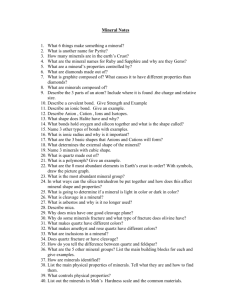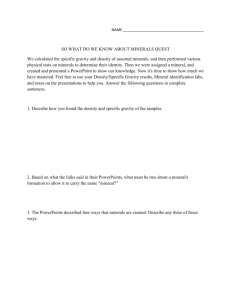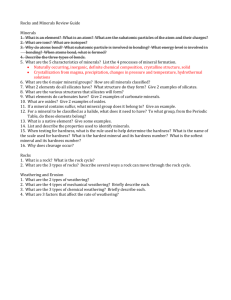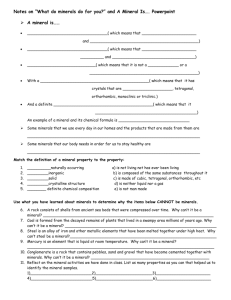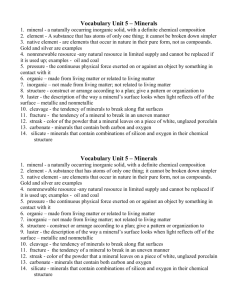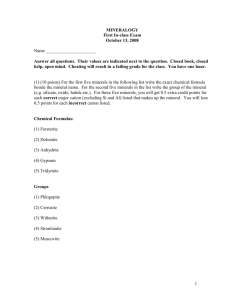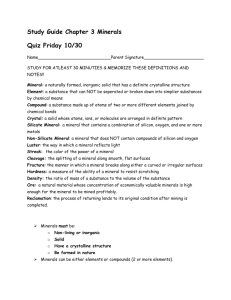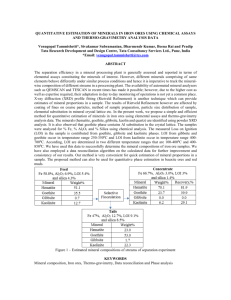MIneral Groups Fill
advertisement
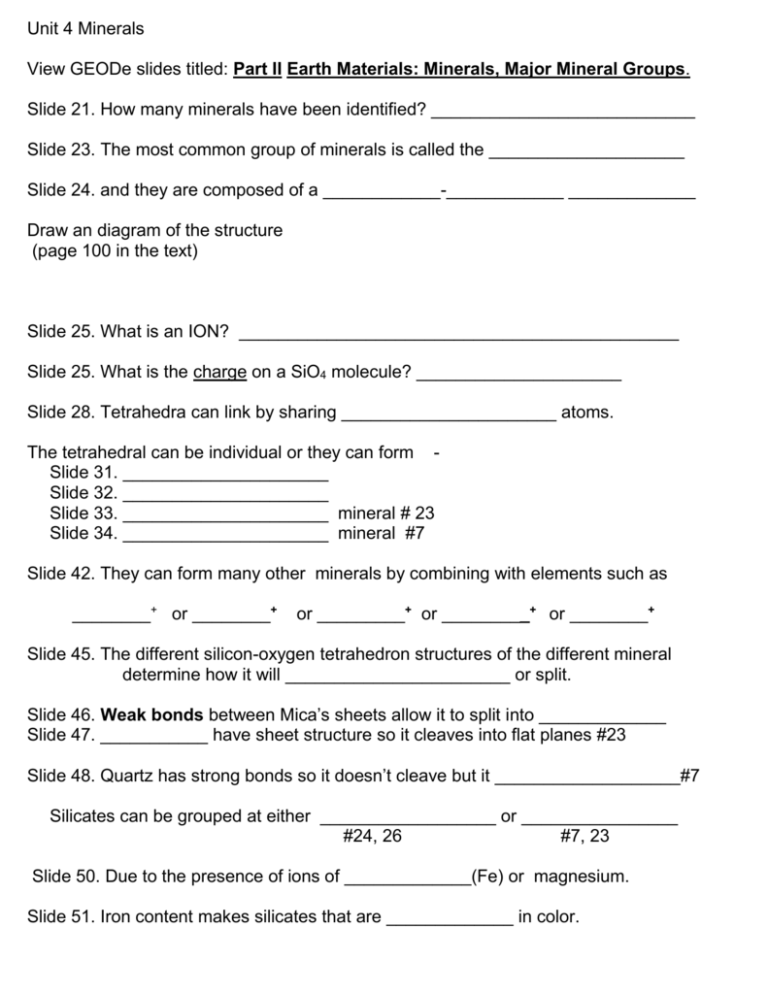
Unit 4 Minerals View GEODe slides titled: Part II Earth Materials: Minerals, Major Mineral Groups. Slide 21. How many minerals have been identified? ___________________________ Slide 23. The most common group of minerals is called the ____________________ Slide 24. and they are composed of a ____________-____________ _____________ Draw an diagram of the structure (page 100 in the text) Slide 25. What is an ION? _____________________________________________ Slide 25. What is the charge on a SiO4 molecule? _____________________ Slide 28. Tetrahedra can link by sharing ______________________ atoms. The tetrahedral can be individual or they can form Slide 31. _____________________ Slide 32. _____________________ Slide 33. _____________________ mineral # 23 Slide 34. _____________________ mineral #7 Slide 42. They can form many other minerals by combining with elements such as ________+ or ________+ or _________+ or _________+ or ________+ Slide 45. The different silicon-oxygen tetrahedron structures of the different mineral determine how it will _______________________ or split. Slide 46. Weak bonds between Mica’s sheets allow it to split into _____________ Slide 47. ___________ have sheet structure so it cleaves into flat planes #23 Slide 48. Quartz has strong bonds so it doesn’t cleave but it ___________________#7 Silicates can be grouped at either __________________ or ________________ #24, 26 #7, 23 Slide 50. Due to the presence of ions of _____________(Fe) or magnesium. Slide 51. Iron content makes silicates that are _____________ in color. Mineral Group Name Chemical Formula Characteristics And Examples Unit 4 Mineral Groups Use a highlighter to highlight the element or ion in each chemical formula that defines the mineral into the group. Mineral group Silicates Name Chemical formula Use Quartz SiO2 Glass , Abrasives Precision instruments, Feldspar KAlSi3O8 Olivine Topaz (Mg, Fe)2SiO4 ZrSiO4 Al2SiO4(FOH)2 Electrical insulator, Ceramic glazes Dental products, Opalescent glass Used in detergents Basic refractors Beryl Be3Al2Si6O18 Emeralds, Nuclear industry Fluorescent Lamps Mica KAl2AlSi3O10(OH)2 Electrical and heat insulation Fireproof paint, Porcelain products Talc Mg3Si4O10(OH)2 Textile, Cosmetics, Paint industries Zircon NON-Silicate Mineral Groups A metal + oxygen A metal + sulfur On the Periodic Table of Elements Jewelry Jewelry Clear or finely colored used as gems Practice Mineral 1. CaCO Group 3 2. Cu O 2 3. FeCO 3 4. Al O 2 3 5. SiO 2 6. PbS 7. Fe2O 3 8. (Mg) SiO 2 9. CaSO 4 4 10. BaSO 4 11. CaMg(CO ) 3 2 12. Fe O 3 4 Specific gravity High or low IF a silicate, Ferromagnesian or Non-ferromagnesian


